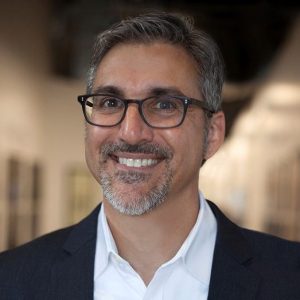Build It Green recently hosted a virtual training session on feasible strategies for designing and building affordable, all-electric multifamily homes. The instructors, Nick Brown of Build Smart Group and Robert Fortunato of ForStrategy Consulting, have been designing and building net-zero homes for over a decade.
Check out the recording of the training here and the PDF of the presentation here.

We were honored to have Nick Brown of Build Smart Group and Robert Fortunato of ForStrategy Consulting as instructors for our event in March. Together, they shared proven, cost-effective strategies for electrifying multifamily buildings, demonstrating years of experience and leaving those who attended with several key takeaways.
Many attendees were building professionals working on all-electric projects of their own. They expressed that they had been struggling to improve performance in all-electric buildings and were looking for guidance on how to comply with California’s Energy Code. The session also prompted a number of questions about the economics of EV charging, and whether using central or individual heat pump hot water units in multifamily buildings would be more cost-effective.
Below is a summary of the key ideas covered during the training. They represent essential considerations for anyone hoping to affordably design, build, and retrofit all-electric multifamily buildings:
Induction cookstoves are safer and more efficient than their gas counterparts, which waste 40% of their energy input and contribute to poor indoor air quality. Electric heat pump water heaters are three times more efficient than their tankless counterparts, and have the added benefit of drinking water storage in case of an earthquake. Another great example is HVAC heat pumps, which are less expensive than dual-fuel solutions (ranging from $6k-13k) because the heating element is contained within the heat pump unit. There are also heat pump clothes dryers, which promise easier installation by avoiding gas lines, flue vent pipes, and exhaust ducts connected to the outside. They actually cool and dehumidify the laundry room, and are gentler on clothes because they use lower temperatures in the drum.
All-electric buildings have improved comfort, health, and quality of life for residents. These aspects appeal to climate-motivated homebuyers who are interested in self-sufficiency and resilience. EV charging also helps future-proof these homes, adding another attractive feature that matches the growing all-electric vehicle trend.
With 13% of California’s new car sales in 2020 being plug-in electric vehicles and all new California passenger vehicles required to be EV by 2035, installing EV chargers is a smart investment. Baseline compliance with CALGreen Code dictates that at least 10% of spaces need to be EV-capable, but this is changing—some places are already recommending fully installed EV chargers. As a result, best practices suggest designing for 10% fully installed and expandable to 20% ports in a few years. There are incentives currently available to assist with this process, like Southern California Edison’s Charge Ready incentive program.
It’s important to flatten the load curve first, using simple design elements like building orientation, overhangs, and air sealing and insulation. Make sure you set performance targets and issue clear Owner’s Project Requirements and Basis of Design documents, which can help with providing accurate specifications and loads. Transformers are often oversized, and as a result, not easily obtainable from the utility—this can cause unnecessary delays.
All-electric building design goes a long way toward Energy Code compliance, with mini split systems alone contributing an average of +10% in compliance modeling. Using efficient electric systems also ensures compliance with other codes and is a smart way to plan for changes to come. Many reach codes in California already require all-electric construction, 2019 CALGreen Code mandates garages with EV-charging capabilities, and the 2022 Energy Code will require electric-readiness and establish electric heat pumps as a baseline technology.
Examples that were shared include continuous commissioning and making sure that shading isn’t interfering with solar power output. It is also essential that there is clear communication and accountability for the person who receives and addresses any solar inverter error codes—that way, you can ensure the solar panels are doing their job correctly.

NICK BROWN | Founder of Build Smart Group
Nick is well-versed in all things net-zero, energy-efficient, and all-electric. As a longtime member of the California Assocation of Building Energy Consultants, he has become a Certified Energy Analyst for residential buildings and an Associate Energy Analyst for nonresidential buildings.
Nick has also developed hands-on building experience through the process of retrofitting his own home. He brings his knowledge of processes and construction to the classes he teaches for Southern California Edison and his advisory work with the Energy Code Ace education team.

ROBERT FORTUNATO | President of ForStrategy Consulting
Robert assists developers in significantly reducing capital and operating expenses while scaling solutions that are futureproof, safer, more durable, better for the occupants’ health—and have a better rental demand and market value as a result.
He does this through a process he learned while designing and general contracting his own Green Idea House, a multiple award-winning project. It is one of the first affordable, net-zero energy, zero-carbon case study houses made with standard construction materials and off-the-shelf technologies. It is an inspiration for building professionals everywhere.
This webinar was generously sponsored by Southern California Edison. To see how they have phased gas out of their portfolio and are working toward California’s carbon neutrality goals, check out the Pathway 2045 document.


Alex Coba
Communication Associate
As a proud California native from Stockton, Alex brings a wealth of experience and a versatile skill set. He has a solid communication background with a Bachelor of Arts in Journalism and Public Relations from California State University, Chico. Alex is adept at strategic communications and media relations, with experience gathering and sharing stories from his local communities that uplift the unique spirit and values of those places. He is excited to join Build It Green, where he can apply his talents to further BIG’s mission to help communities across California thrive